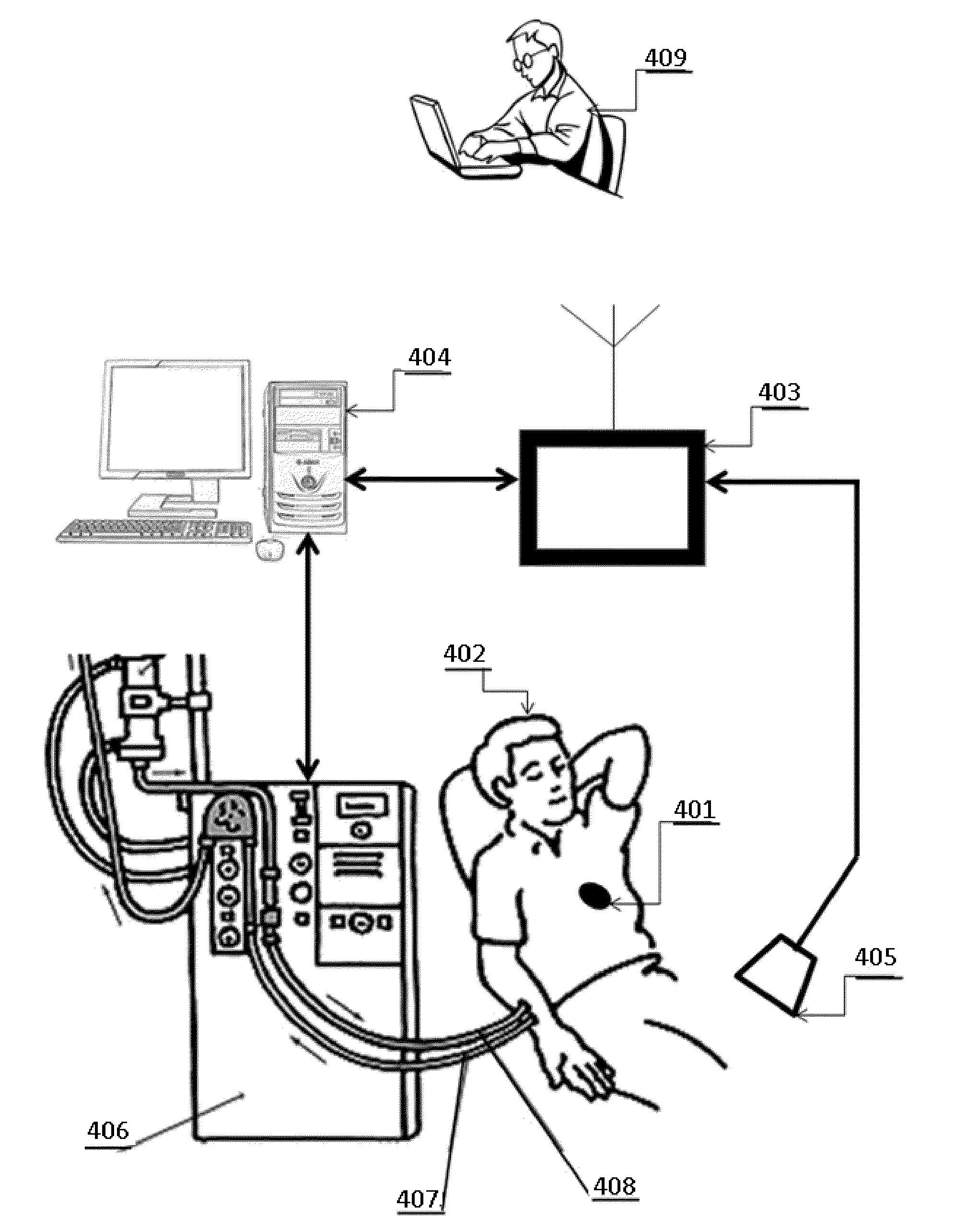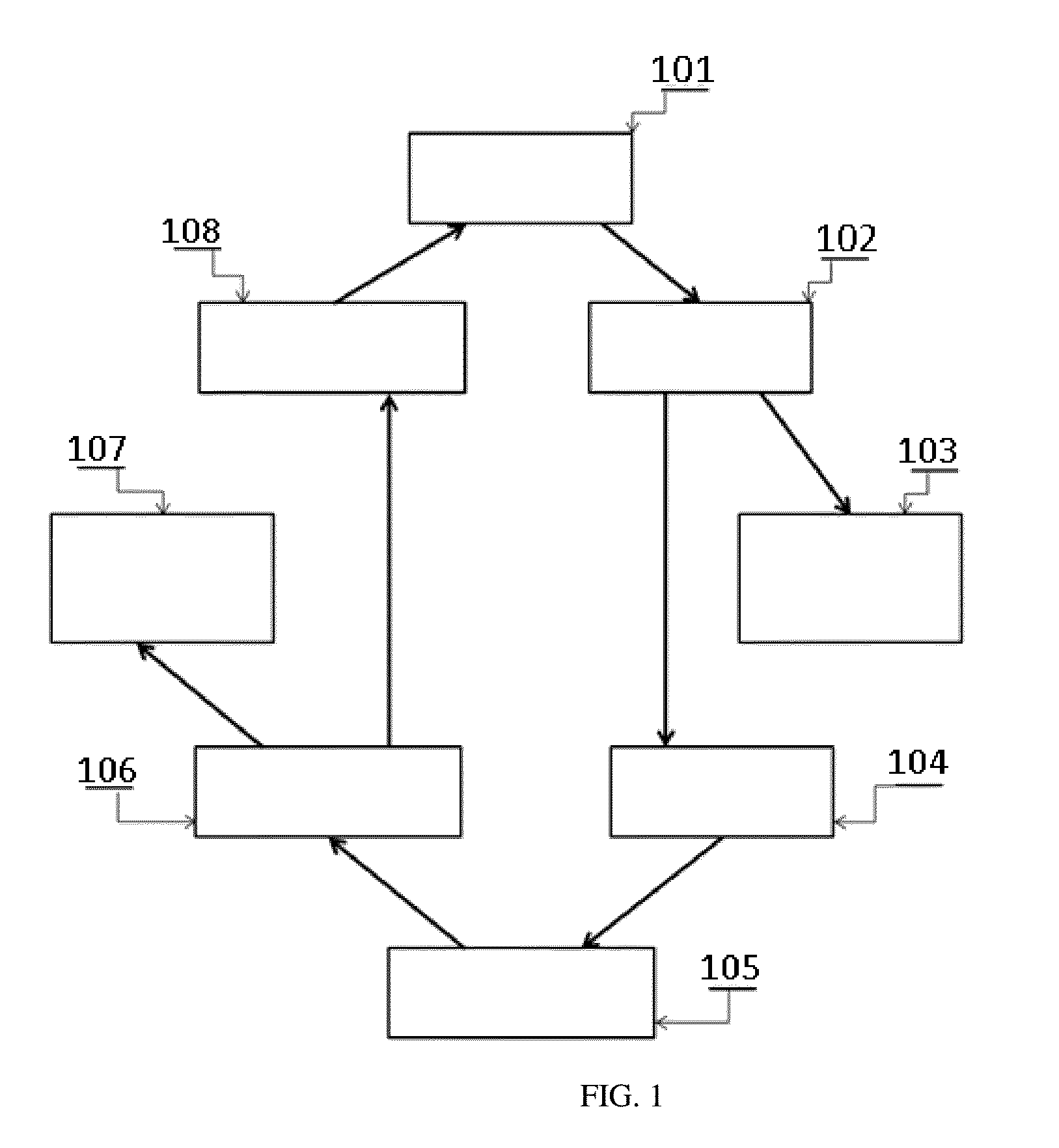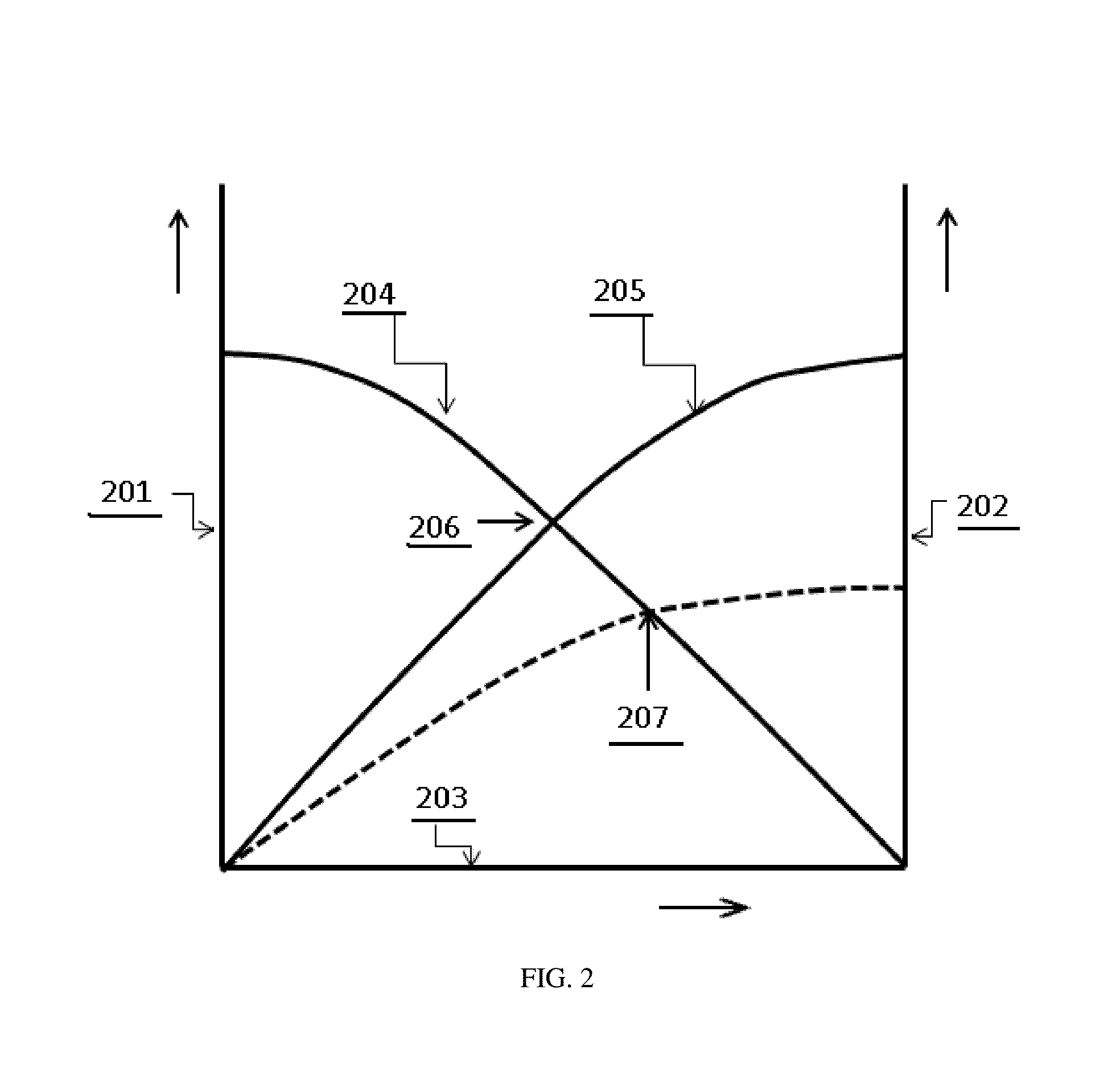Method and Device to Manage Fluid Volumes in the Body
a technology of fluid volume management and fluid volume, applied in the field of electronic devices, can solve the problems of reduced kidney function, reduced ability of kidneys to excrete excess salts and water, and severe compromised kidney function
- Summary
- Abstract
- Description
- Claims
- Application Information
AI Technical Summary
Benefits of technology
Problems solved by technology
Method used
Image
Examples
example 1
[0106]Initially, a set of scores can be calculated from the sensory information, using one of the six functions listed in Table 2. A graphical representation of the same six functions is shown in FIGS. 5 and 6. Functions D1, D2 and D3 are discrete functions, which give discrete outcomes of zero or one, whereas, the functions S1, S2 and S3 are continuous functions with the possibility of giving any outcomes in the range from zero to one, such as 0.34. Functions D1, D2 and D3 have the advantage of being easier to implement because the only requirement is a comparison of the argument x to a threshold value of xC, hence the functions D1, D2, and D3 are easier to implement in a computer. However, the discrete functions D1, D2, and D3 provide no grey scale information or proportional response to a given input. Continuous functions S1, S2 and S3 provide a much more graded response, but impose a heavier computational burden on the computer by either requiring a mathematical computation of t...
PUM
 Login to View More
Login to View More Abstract
Description
Claims
Application Information
 Login to View More
Login to View More - R&D
- Intellectual Property
- Life Sciences
- Materials
- Tech Scout
- Unparalleled Data Quality
- Higher Quality Content
- 60% Fewer Hallucinations
Browse by: Latest US Patents, China's latest patents, Technical Efficacy Thesaurus, Application Domain, Technology Topic, Popular Technical Reports.
© 2025 PatSnap. All rights reserved.Legal|Privacy policy|Modern Slavery Act Transparency Statement|Sitemap|About US| Contact US: help@patsnap.com



